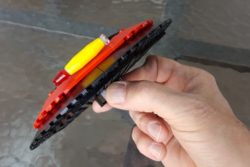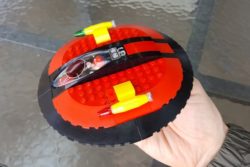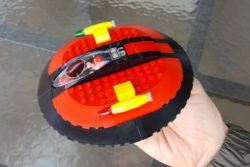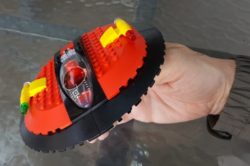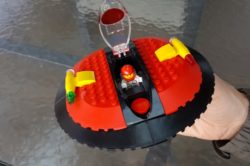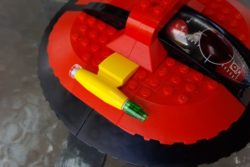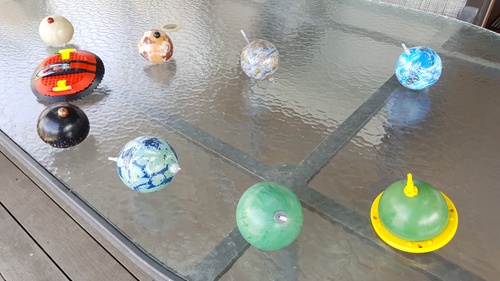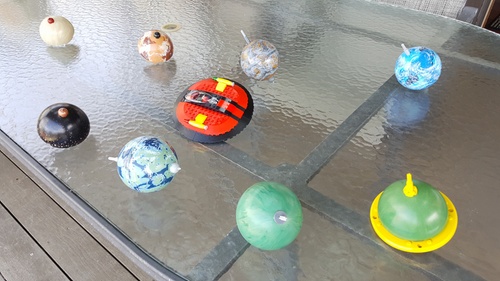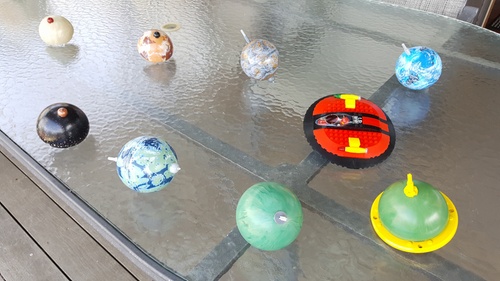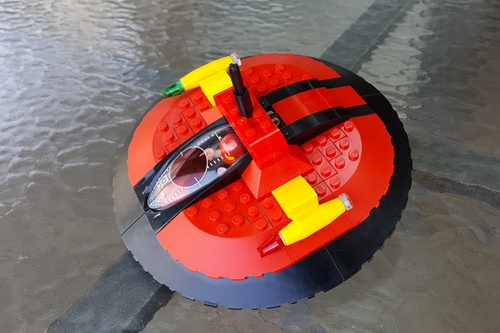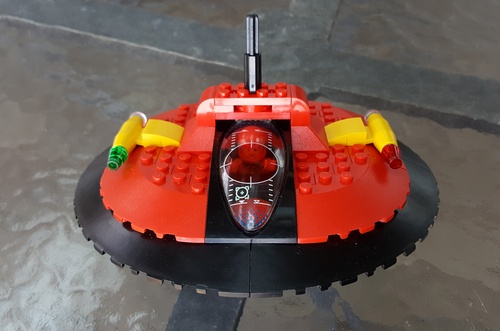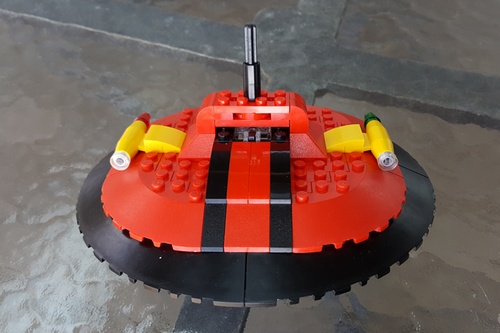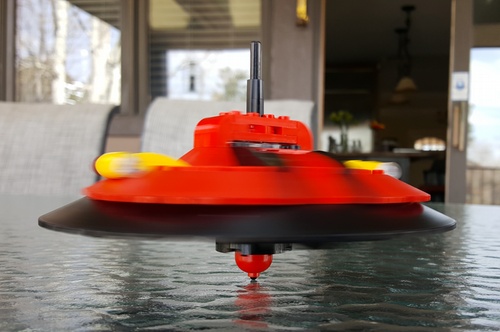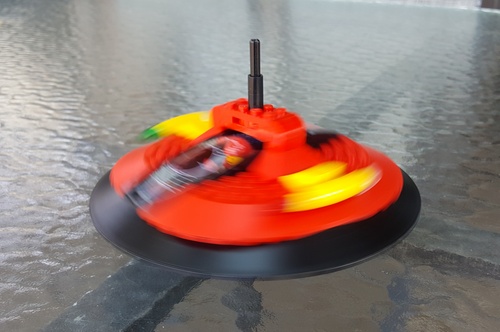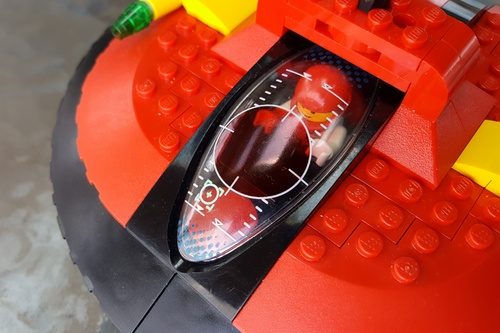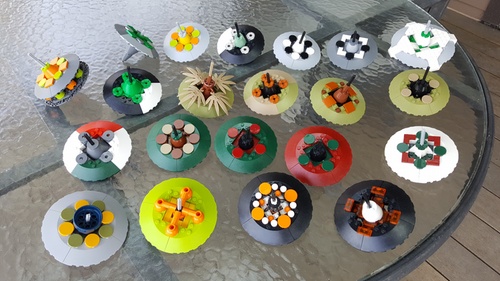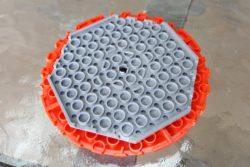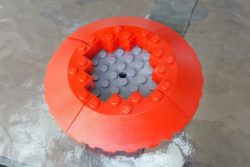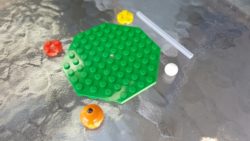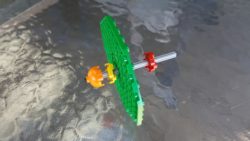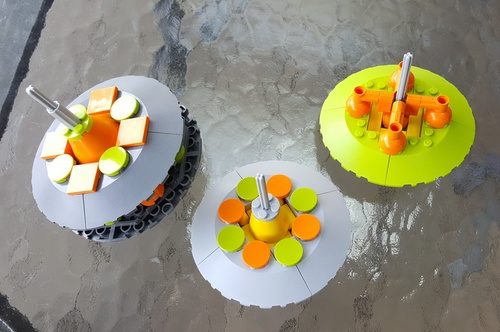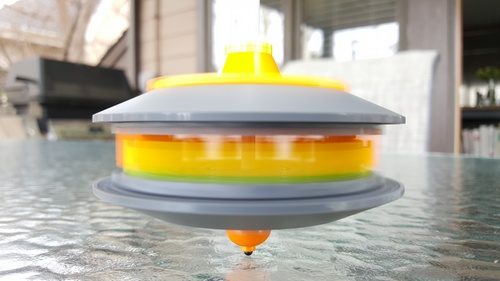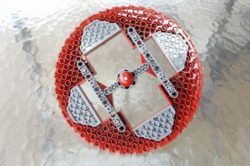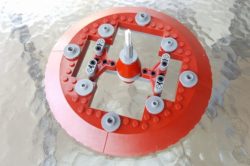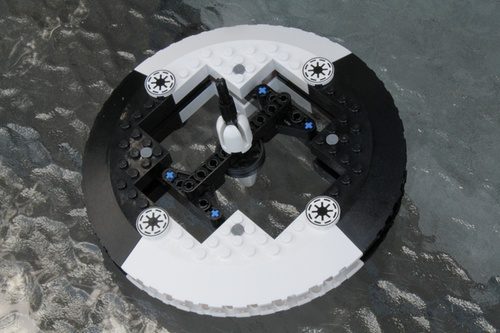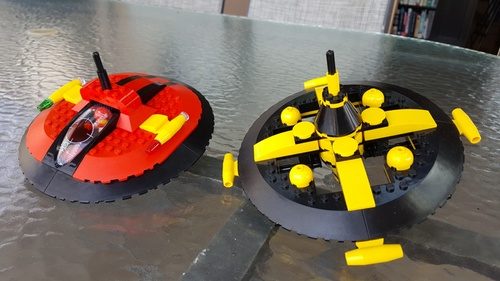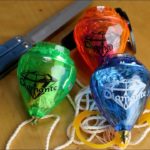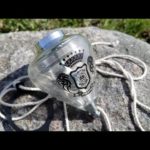Introduction
∨ I’m sure that many here will agree that LEGO® has no higher purpose than in the construction of swooshable flying machines. This little jet plane is one of my favorites…
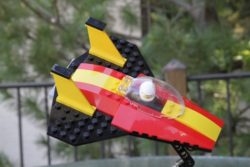
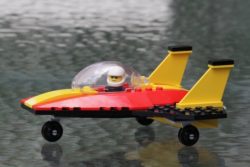
∨ And thanks to a very cool design by favorite builder Seaman SPb, I now have a brand new spinning space Ferrari to swoosh around. I call it a “spinship” for short.
This particular spinship is modeled after the 2156 Ferrari 908W coupe — a high-performance luxury sports ship in the grand touring tradition. The “W” is for warp.
∨ Starboard instrument pod with US Coast Guard-compliant running lights…
∨ Inside the cockpit…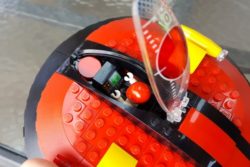
∨ Yesterday, I took the Ferrari out for a little spin through the inner Zargon system at warp 12 — except through the curves, of course.
∧ Glad I caught this chicane! The inner planets line up like this only once every 27.3 Earth years.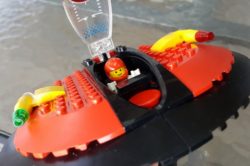
Whee doggies! This thing can move!
∨ Built-in swooshing handle…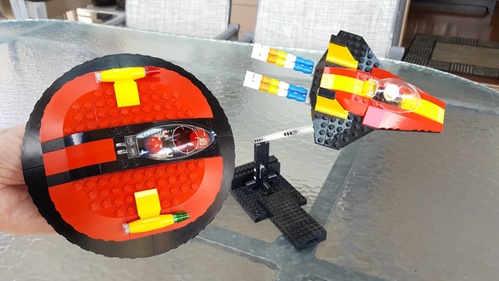
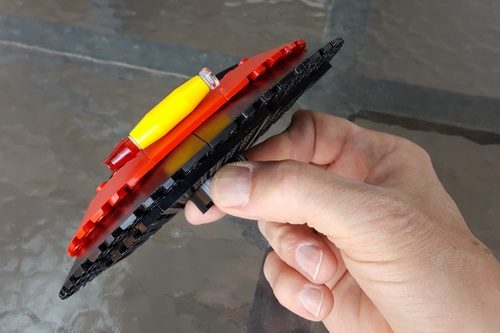 .
.
Swooshing sounds being mandatory, AFOLs generally have to do their swooshing when no one else is around — especially when a bath towel cape is also involved.
∨ But wait, there’s more! A 27 cm “swooshie stick” for those hard-to-reach maneuvers…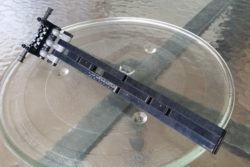
∨ Just remove the red tip holder, leaving the black 4×4 round brick in place…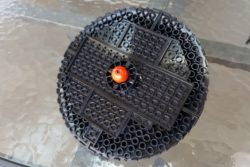
∨ Then attach the swooshie stick adapter to the 4×4 round brick and overlying plate.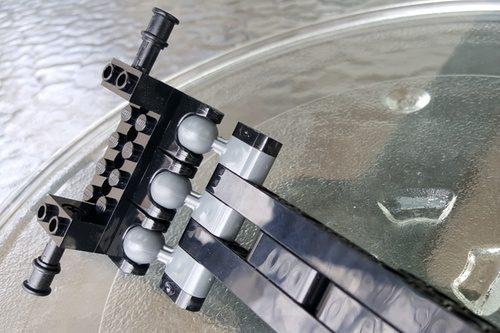
∨ The 12 studs and 3 Technic ball joints recruited by the adapter make for a sturdy swooshie stick attachment with a single-DOF hinge joint that stays put…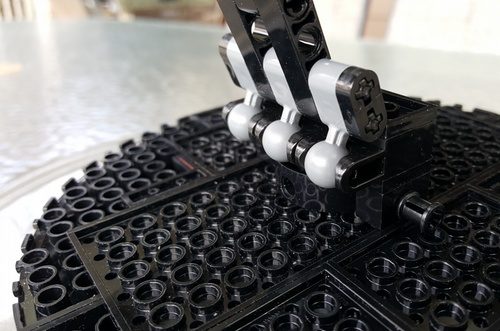
Spinship top
Back on the ground, the space Ferrari doubles as — what else? — a working spinning top! And a pretty good one at that.
Turntable-based planetary top starter
The spinship has low ground clearance and a lot of inertia by design. Unpracticed hands tend to have trouble with that combination, but it doesn’t have to spoil the spinship’s play value as a top.
∨ This matching third-generation 4:1 planetary starter lets everyone get in on the fun.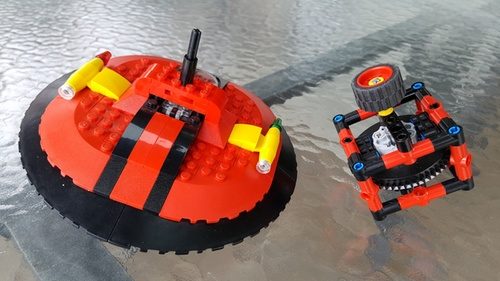
∧ Having had lots of top-twirling practice, I get launch speeds of ~500 RPM and spin times of ~55 sec by hand and ~900 RPM and ~105 sec with the starter.
∨ The starter is a lot more compact than any of my first-generation and second-generation planetary starters based on the bulky “hard plastic wheel with small cleats and flanges” (64712).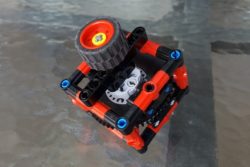
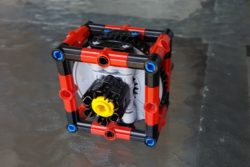
∨ Every planetary gear train needs a ring gear or annulus with inward-pointing teeth. This starter takes advantage of the 24-tooth ring gear inside a large Technic turntable.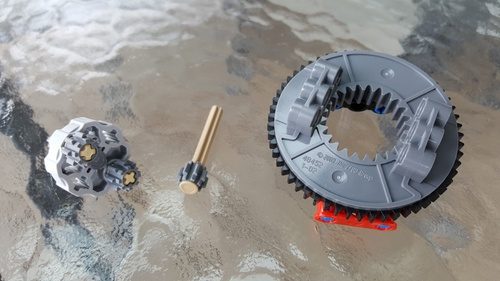
∧ The sun and 2 planet gears are all reinforced 8-tooth spurs. The resulting backlash would be an issue in many applications, but not in a top starter.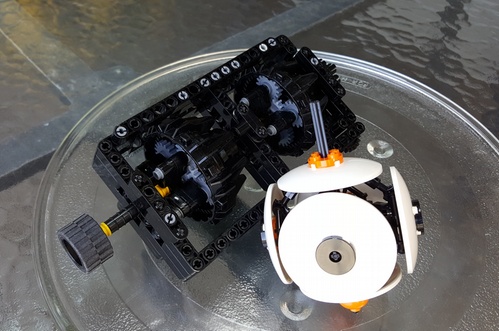
∧ I still like my second-generation starters for their greater torque capacity and smoother operation. But this new one works well enough with the spinship, and you can’t beat the color match!
Design notes
∨ The first time I laid eyes on the Flying Cat by favorite builder Seaman SPb, I knew 2 things: (i) I’d soon be swooshing my own civilian version. (ii) It would double as a working top.
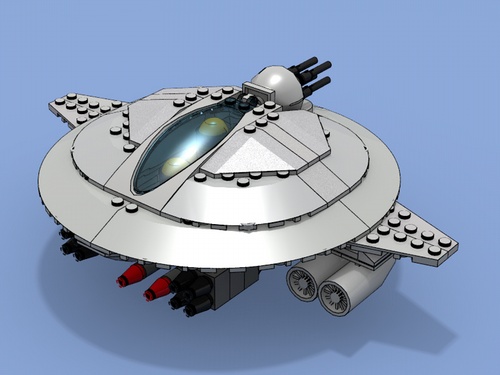
∨ The centerpiece of Seaman’s design is of course the long and graceful 9x3x5/3 bubble canopy (47844) with dedicated 10x4x2 windscreen (47843).
Finding that I had both the windscreen and a canopy with the red circle and vernier pattern (47844pb01) on hand made my week.
Once I get the necessary 4×4 wedges (43708), I’ll do a 2nd spinship with an uppermost tier more like the Flying Cat’s — but still without weapons. (Make love, not war!)
∨ Making working tops out of circular “rings” of 6×6 and 10×10 round corner slopes was already familiar territory…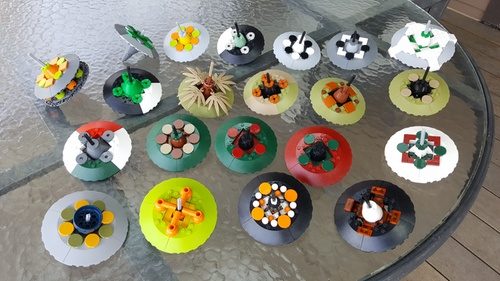
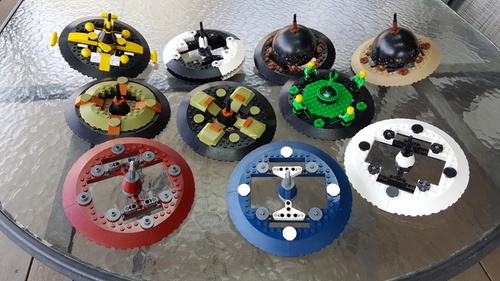
∨ I’ve even been known to stack the smaller rings on the larger…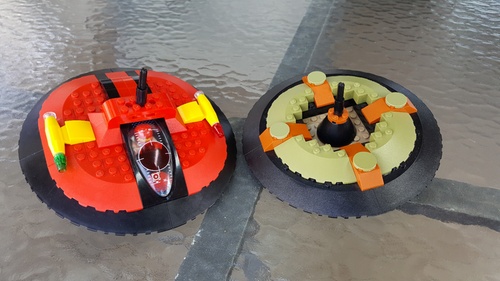
∨ And some of the tops have been kinda spacey…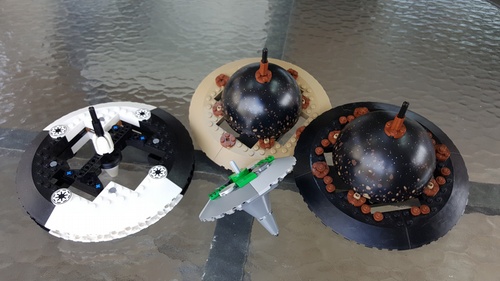
But I was so top-focused that I never thought to break a ring’s inherent 4-fold rotational symmetry with a midline structure as asymmetric as Seaman’s canopy and tail section.
The spin axis would have to go right though the canopy to make a top out of this, and that posed 3 major challenges…
∨ Tip assembly: A wobble-free top needs a wiggle-free tip smack on the intended spin axis. And tip rigidity is doubly important in a top as heavy as the spinship. A stiff, well-aligned, low-friction tip assembly was therefore the first order of business.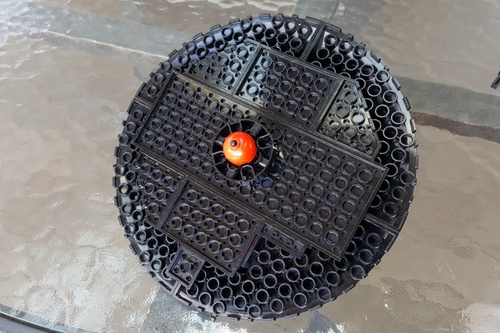
∨ Problem was, the canopy blocked any through-going central axle that might have provided secure mounts for the stem and tip. That meant a tip assembly plastered studs-up onto the bottom of the raft of plates holding the ring of 10×10 round corner slopes together from below.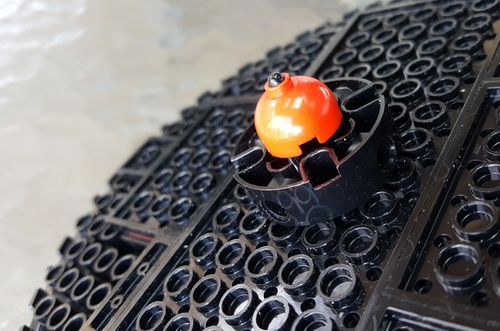
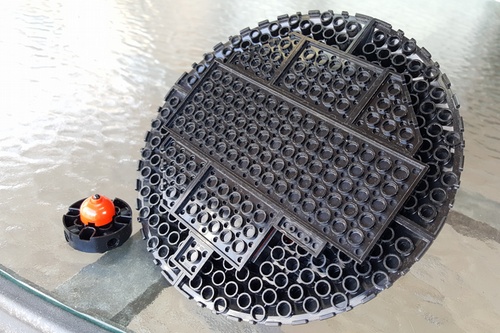
∧ Keeping the tip from wiggling in such a heavy top in the absence of any other support took some doing, but this solution works well enough.
∨ Stem assembly:
Lack of a through-going central axle also complicated stem design. The spinship needed a stiff stem assembly well aligned with the tip without detracting too much from the flowing lines.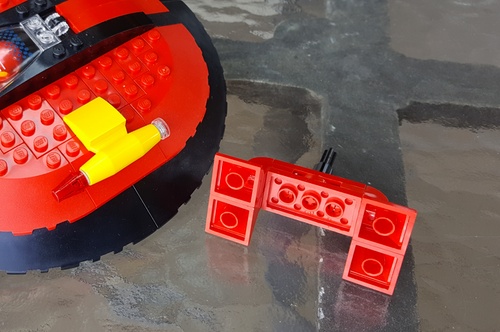
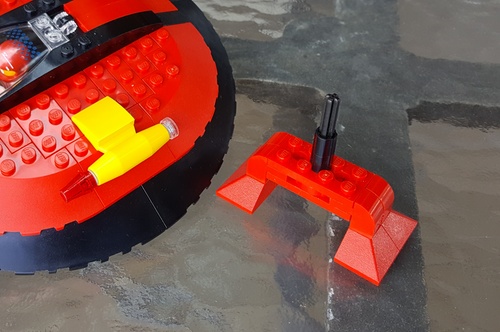
∧ Spaceships generally don’t need rollbars, but I’m content with this solution.
∨ Balance:I was determined to give the spinship a distinct nose and tail, as Seaman did with his Flying Cat. And I was dead-set on this profile…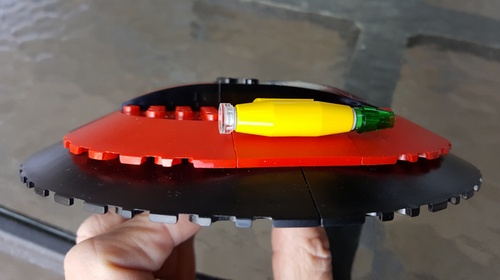
Getting the dynamic balance needed for smooth spins despite the fore-aft asymmetry was the 3rd major challenge — and boy, was it a doozy! I’ll spare you the details and the cussing.
Optional: Crater tops — a favorite genre
LEGO® tops based on circular rings of 6×6 (95188) and 10×10 (58846) round corner slopes have long been favorites of mine. Performance is first-rate, and the platform supports many interesting visual design options.
∨ For lack of a better term, I call tops made of rings like these “crater tops” for the bare ring’s resemblance to the wall of a Martian or lunar crater.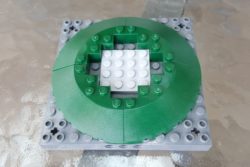
∧ Ring of dark green 6×6 round corner slopes on a 12×12 base.
If you have any interest in LEGO® top-making, I suggest you give crater tops a try.
∨ Crater tops with 12×12 rings:
A ring of 6×6 round corner slopes is of course 12×12 studs in outside dimensions. The largest square plate the central opening can accommodate is 4×4. Most of my crater tops with 12×12 rings are plate tops.
∨ The 10×10 octagonal plate (89523) provides a sturdy mount for a 12×12 ring.
∨ Better yet, the plate’s central axle hole allows you to join the stem and tip assemblies with a through-going axle. This arrangement generally makes for better aligned and more rigid stems and tips, and that reduces wobble.
∨ A 12×12 crater top makes a great platform for color mixing effects.
∨ And for clutch tops with stems meant to lift off at launch…
∨ The stems on these crater tops are intentionally too short to twirl by hand. The chuck on the wind-up starter at far left works with both of these tops. The top on the left also accepts the DBG dog and centrifugal clutch adapters near the center.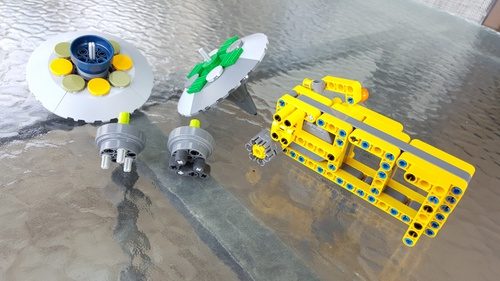
∨ Since the parts are usually pretty cheap and widely available, the designs possible with a 12×12 crater top are limited only by your imagination…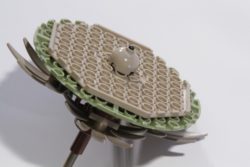
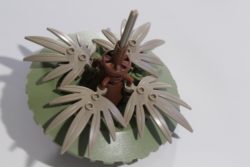 ∨ Crater tops with 20×20 rings:A ring of 10×10 round corner slopes is 20×20 studs in outside dimensions, but the largest square plate fitting inside the central opening is only 6×6.
∨ Crater tops with 20×20 rings:A ring of 10×10 round corner slopes is 20×20 studs in outside dimensions, but the largest square plate fitting inside the central opening is only 6×6.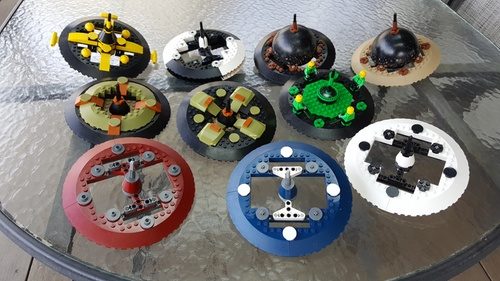
∧ I like the color schemes these large rings support.
∨ Ring of dark tan 10×10 round corner slopes on a 20×20 base…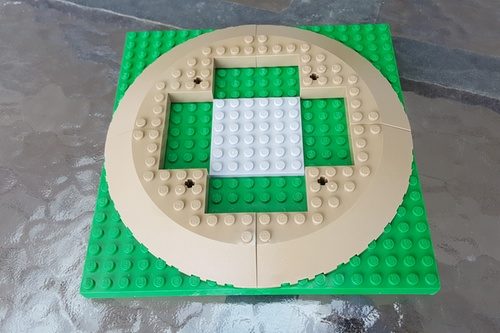
∨ TLG doesn’t make a plate large enough to mount a 20×20 ring securely all by itself — at least not one with a central axle hole. But you can still make a 20×20 ring into a plate top with a multi-plate foundation. This example retains a central axle hole.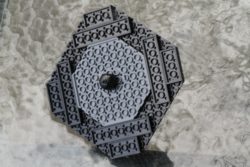
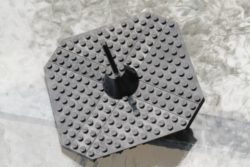
∨ The spinship is unusual in that the superstructure built on the 20×20 ring didn’t allow a through-going central axle. Hence, no need for an axle hole in its plate foundation…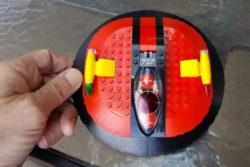
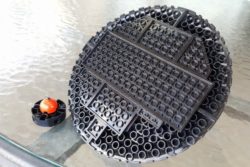
∨ Mounting a 20×20 ring on a studless hub and spoke “suspension system” opens up many fun possibilities, but the whole thing will have to be pretty stiff to avoid wobble.
∧ Suspension system attachment points include the axle holes in the 10×10 round corner plates and various tubes on their undersides.
∨ This sturdy suspension system mounts two 20×20 rings base-to-base…
∨ My first 20×20 crater top spaceship, the Blacktron Chamberlain-class Capitulator (right) from late 2015. Note the 4-fold rotational symmetrythroughout the structure. Unlike the spinship, this one basically balanced itself.
Mechanical benefits: A typical crater top has many winning mechanical attributes:
- The “down and out” mass distribution of the ring itself tends to give the top as a whole a lower than average center of mass (CM), a higher than average axial moment of inertia (AMI), a very high AMI per unit mass, and a higher than average AMI/TMI ratio, where TMI is the transverse moment of inertia about the tip. This combination of mass properties allows the top to resist aerodynamic and tip-related braking torques while remaining upright down to very low speeds.
- The ring’s inherent 4-fold rotational symmetry invites the same symmetry in ring attachments, and that guarantees static balancewhen all parts are fully seated.
- The rigidity of a well-engineered plate-based crater top effectively eliminates elastic wobble at speed. Crater tops with studless suspension systems are generally less rigid but can still be wobble-free.
Together, these attributes give crater tops exceptionally long, smooth spins.
∨ This low-slung, high-AMI 20×20 crater top is stable down to speeds below 100 RPM. For a LEGO® top, that’s pretty slow.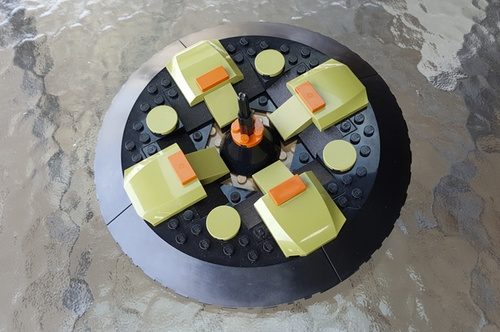
Specifications (spinship only)
| Overall dimensions: | 160×124 mm (DxH) with stem assembly, 160×56 without |
| Mass: | 184 g with stem assembly, 176 g without |
| Launch speed by hand: | ~500 RPM |
| Spin time by hand: | ~50 sec |
| Launch speed with starter: | ~900 RPM |
| Spin time with starter: | ~105 sec |
| Topple speed: | ~200 RPM |
| Modified LEGO® parts: | Tip cut from 4L antenna |
| Non-LEGO® parts: | None |
| Credits: | Original MOC inspired by the Flying Cat MOC by favorite builder Seaman SPb |
| See also: | Swooshable jet plane, Asteroid crater top, Blacktron Chamberlain-class Capitulator, clutch tops, first-generation planetary top starters |

Jeremy McCreary
Lego spintop crafter
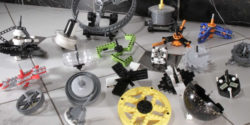
Most of the videos here are extracted from my MOCs pages there and are working gizmos born of a fascination with gadgets and the science and engineering behind them. Technical LEGO® — my term for the fusion of LEGO® with STEM (science, technology, and math) subject matter — brings out my inner inventor/designer/engineer/toymaker like no other medium.
My work owes a great deal to the folks on my list of favorite builders. Their imagination and ingenuity never cease to amaze.
